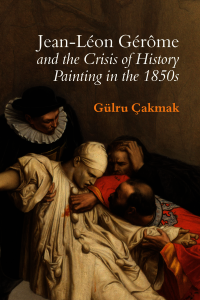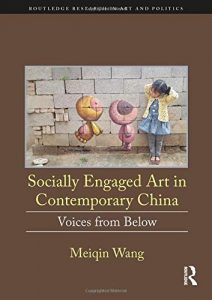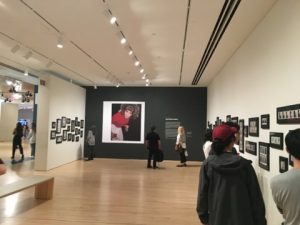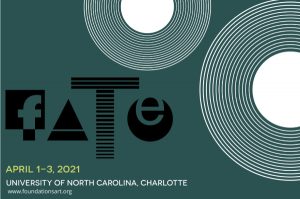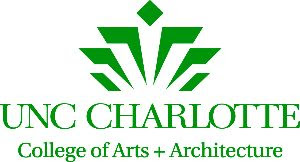CAA News Today
Announcing the 2020 Recipients of the Art History Fund for Travel to Special Exhibitions
posted by CAA — May 12, 2020
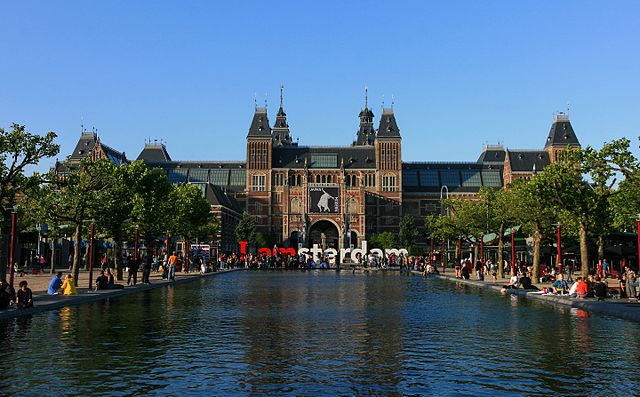
Rijksmuseum, Amsterdam
In fall 2018, we announced CAA had received an anonymous gift of $1 million to fund travel for art history faculty and their students to special exhibitions related to their classwork. The generous gift established the Art History Fund for Travel to Special Exhibitions.
The jury for the Art History Fund for Travel to Special Exhibitions has now selected the second group of recipients as part of the gift. This year’s awardees are:
Holly Flora, Tulane University, New Orleans, LA
Course: Art, Cosmopolitanism, and Intellectual Culture in the Middle Ages
Exhibition: Medieval Bologna: Art for a University City at the Frist Center for the Visual Arts, Nashville, TN
Caroline Fowler, Clark Art Institute, Williamstown, MA
Course: Slavery and the Dutch Golden Age
Exhibition: Slavery at the Rijksmuseum, Amsterdam
Maile Hutterer, University of Oregon, Eugene, OR
Course: Time in Medieval Art and Architecture
Exhibition: Transcending Time: The Medieval Book of Hours at The Getty Center, Los Angeles, CA
Erin McCutcheon, Lycoming College, Williamsport, PA
Course: Art & Politics in Latin America
Exhibition: Rafael Lozano-Hemmer: Unstable Presence at SFMOMA, San Francisco, CA
Shalon Parker, Gonzaga University, Spokane, WA
Course: Women Artists
Exhibition: New Time: Art and Feminisms in the 21st Century at the Berkeley Art Museum and Pacific Film Archive, Berkeley, CA
Rebecca Pelchar, SUNY Adirondack, Queensbury, NY
Course: Introduction to Museum Studies
Exhibition: Marcel Duchamp: The Barbara and Aaron Levine Collection at the Hirshhorn Museum, Washington, DC
As museums and schools have moved online in light of the coronavirus pandemic, we are being as flexible as necessary with the dates of travel to accommodate all award winners and classes.
The Art History Fund for Travel to Special Exhibitions supports travel, lodging, and research efforts by art history students and faculty in conjunction with special museum exhibitions in the United States and throughout the world. Awards are made exclusively to support travel to exhibitions that directly correspond to the class content, and exhibitions on all artists, periods, and areas of art history are eligible.
Applications for the third round of grants will be accepted by CAA beginning in fall 2020. Deadlines and details can be found on the Travel Grants page.
New in caa.reviews
posted by CAA — Mar 13, 2020
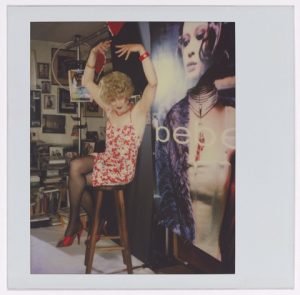 Nina Lubbren discusses Jean-Léon Gérôme and the Crisis of History Painting in the 1850s by Gülru Çakmak. Read the full review at caa.reviews.
Nina Lubbren discusses Jean-Léon Gérôme and the Crisis of History Painting in the 1850s by Gülru Çakmak. Read the full review at caa.reviews.
Yanhua Zhou writes about Meiqin Wang’s Socially Engaged Art in Contemporary China: Voices from Below. Read the full review at caa.reviews.
Ron E. Reichman reviews the SFMOMA exhibition and catalog April Dawn Alison. Read the full review at caa.reviews.
Announcing the 2020 Awards for Distinction Recipients
posted by CAA — Feb 04, 2020
Honorees this year include Eleanor Antin, Joseph Leo Koerner, Maud K. Lavin, Annet Couwenberg, Harriet Senie, Kyle Staver, and many other scholars, artists, and teachers
CAA Annual Conference, Chicago, February 12-15, 2020
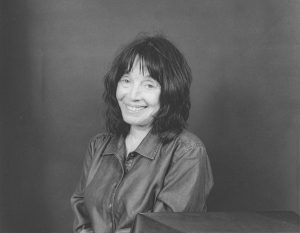
Eleanor Antin
We are pleased to announce the recipients and finalists of the 2020 CAA Awards for Distinction. Among the winners this year is Eleanor Antin, recipient of the 2020 Distinguished Artist Award for Lifetime Achievement. Born in the Bronx in 1935 to immigrant parents, Antin is an innovator and pioneer as a feminist artist, a performance and installation artist, a conceptual artist, filmmaker, and writer. She is an emeritus Professor of Visual Arts at the University of California, San Diego and author of several books including An Artist’s Life by Eleonora Antinova and Conversations with Stalin. Antin’s solo museum exhibitions have appeared at the MoMA, the Whitney Museum, and, in 2019, the Los Angeles County Museum of Art with her retrospective, Eleanor Antin: Time’s Arrow. Her awards include a Guggenheim Fellowship and a 2006 Women’s Caucus for Art Lifetime Achievement Award.
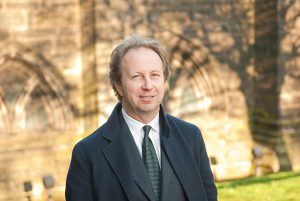
Joseph Leo Koerner
Joseph Leo Koerner is the recipient of the 2020 Distinguished Lifetime Achievement Award for Writing on Art. His achievements include four landmark books on sixteenth-century paintings: The Moment of Self-Portraiture in German Renaissance Art (University of Chicago Press, 1993), The Moment of Self-Portraiture in German Renaissance Art (University of Chicago Press, 2003), The Reformation of the Image (Reaktion Books, 2004), and Bosch and Bruegel: From Enemy Painting to Everyday Life (Princeton University Press, 2016). Koerner has also written widely on more recent artists, from Caspar David Friedrich to Paul Klee, and explored early-twentieth century Vienna through a documentary project and a semi-autobiographical film.
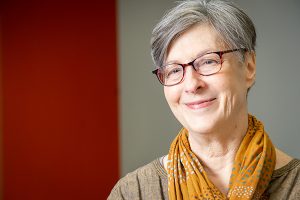
Maud K. Lavin
Dr. Maud K. Lavin is the recipient of the 2020 Distinguished Feminist Award for scholarship. Over the course of three decades, Lavin has worked tirelessly as a key pioneer in the field of feminist art history and visual studies. She is the author of numerous books including the first English-language book on Berlin Dada artist Hannah Hoch, Cut with the Kitchen Knife: The Weimar Photomontages of Hannah Hoch (Yale University Press, 1993), and most recently, Boys’ Love, Cosplay, and Androgynous Idols: Queer Fan Cultures in Mainland China, Hong Kong, and Taiwan, co-edited with Ling Yang and Jamie Zhao (Hong Kong University Press, 2017). She is a professor of Visual and Critical Studies and Art History, Theory, and Criticism at the School of the Art Institute of Chicago.
The Awards for Distinction will be presented during Convocation at the CAA Annual Conference on Wednesday, February 12 at 6:00 PM at the Hilton Chicago. This event is free and open to the public.
The full list of 2020 CAA Awards for Distinction Recipients
Distinguished Artist Award for Lifetime Achievement
Eleanor Antin
Distinguished Lifetime Achievement Award for Writing on Art
Joseph Leo Koerner
Distinguished Feminist Award—Scholar
Maud K. Lavin
Distinguished Teaching of Art Award
Annet Couwenberg
Distinguished Teaching of Art History Award
Harriet Senie
Artist Award for Distinguished Body of Work
Kyle Staver
CAA/AIC Award for Distinction in Scholarship and Conservation
Jeanne Marie Teutonico
Award for Excellence in Diversity
3Arts
Outstanding Leadership in Philanthropy Award
Terra Foundation for American Art
Charles Rufus Morey Book Award
J. P. Park
A New Middle Kingdom: Painting and Cultural Politics in Late Chosŏn Korea (1700–1850)
University of Washington Press, 2018
Finalists
Chanchal B. Dadlani
From Stone to Paper: Architecture as History in the Late Mughul Empire
Yale University Press, 2019
Barbara Furlotti
Antiquities in Motion: From Excavation Sites to Renaissance Collections
Getty Publications, 2019
Matthew Looper
The Beast Between: Deer in Maya Art and Culture
University of Texas Press, 2019
Alfred H. Barr Jr. Award
Karl Kusserow and Alan C. Braddock
Nature’s Nation: American Art and Environment
Princeton University Art Museum, 2019
with contributions by Miranda Belarde-Lewis, Teddy Cruz, Rachael Z. DeLue, Mark Dion, Fonna Forman, Laura Turner Igoe, Robin Kelsey, Anne McClintock, Timothy Morton, Rob Nixon, Jeffrey Richmond-Moll, Kimia Shahi, and Jaune Quick-to-See-Smith
Honorable Mention
Esther Gabara
Pop América, 1965–1975
Duke University Press, 2018
Finalists
Cathleen Chaffee
Introducing Tony Conrad: A Retrospective
Albright-Knox Art Gallery, Buffalo, NY, in association with Koenig Books, London, 2019
Jessica Morgan and Alexis Lowry
Charlotte Posenenske: Work in Progress
Dia Art Foundation and Walther König, 2019
Elizabeth Morrison
Book of Beasts: The Bestiary in the Medieval World
Getty Publications, 2019
Alfred H. Barr Jr. Award for Smaller Museums, Libraries, Collections, and Exhibitions
Denise Murrell
Posing Modernity: The Black Model from Manet and Matisse to Today
Yale University Press in association with The Miriam and Ira D. Wallach Art Gallery, Columbia
University in the City of New York, 2018
Honorable Mention
Phillip Earenfight
Shan Goshorn: Resisting the Mission
Trout Gallery, Dickinson College, 2019
Finalists
Tracy L. Adler
Jeffery Gibson: This is The Day
Prestel Publishing, 2018
Faith Brower, Heather Ahtone, and Seth Hopkins
Warhol and the West
University of California Press, 2019
Frank Jewett Mather Award for Art Criticism
Darby English
To Describe a Life: Notes from the Intersection of Art and Race Terror
Yale University Press, 2019
Art Journal Award
Philip Glahn and Cary Levine
“The Future Is Present: Electronic Café and the Politics of Technological Fantasy”
Art Journal, vol. 78, no. 3 (Fall 2019): 100–121
Arthur Kingsley Porter Prize
Claudia Brittenham
“Architecture, Vision, and Ritual: Seeing Maya Lintels at Yaxchilan Structure 23″
The Art Bulletin, vol. 101, no. 3 (September 2019): 8–36
Learn about the juries that select the recipients of the CAA Awards for Distinction.
News from the Art and Academic Worlds
posted by CAA — Jan 15, 2020
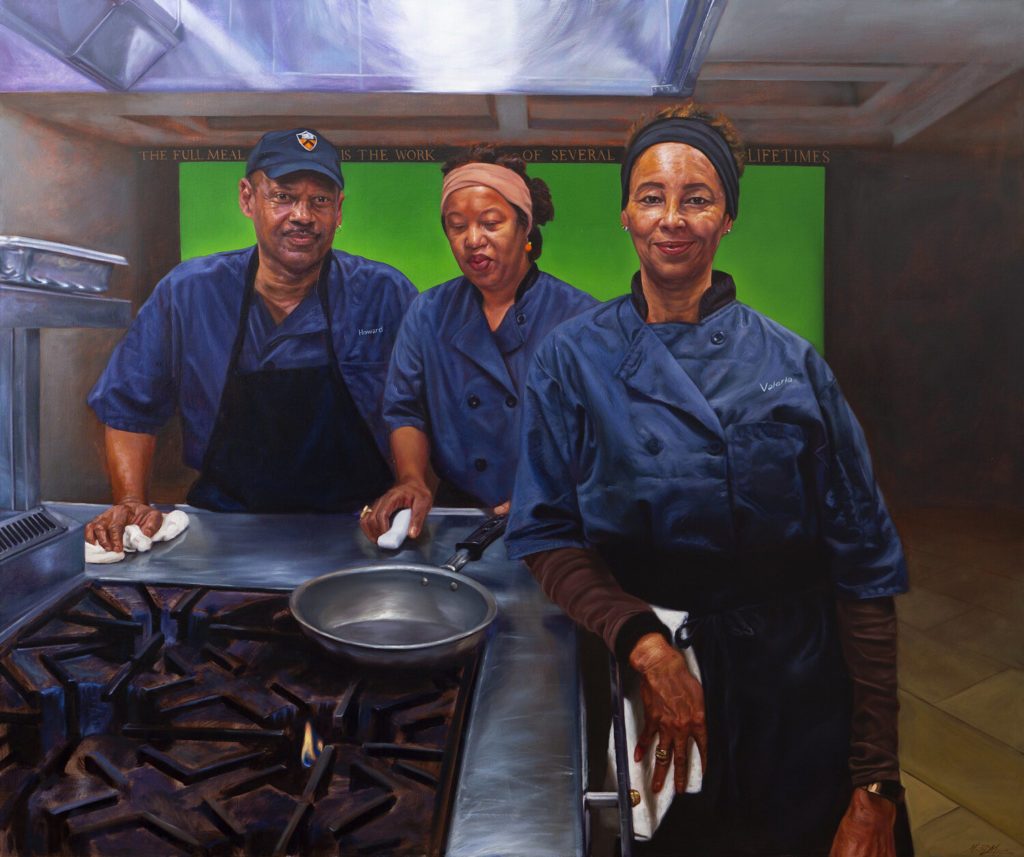
Mario Moore, Several Lifetimes, 2019. Courtesy of the artist.
Want articles like these in your inbox? Sign up: |
Affiliated Society News for January 2020
posted by CAA — Jan 07, 2020
Happy New Year! Affiliated Society News shares the new and exciting things CAA’s affiliated organizations are working on including activities, awards, publications, conferences, and exhibitions. See January’s news below.
Interested in becoming an Affiliated Society? Learn more here.
Community College Professors of Art and Art History
Please join the Community College Professors of Art and Art History at this year’s CAA Conference in Chicago for two events on Wednesday, February 12, 2020.
From 12:30 PM – 1:30 PM in the Lobby Level Continental B room, join us for our annual Business meeting and project share. Bring an idea or project to share with your community college colleagues. Following our business meeting (in the same room) is our session, Taking a New Look: Creating Change in the Studio and Art History Classrooms. Co-Chaired by Susan Altman and Monica Anke Hahn, hear Richard J. Moninski, Tyrus R. Clutter, Rachael Bower and Ross McClain talk about creating meaningful change in their studio and art history programs.
Women’s Caucus for Art
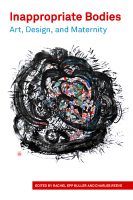
Thursday, February 13, 12:30pm: book presentation and discussion of Inappropriate Bodies: Art, Design, and Maternity, with editors Rachel Epp Buller and Charles Reeve and contributor Niku Kashef
Thursday, February 13, 6:00pm: WCA/CAA panel on Amplifying Inclusion: Intersectional Feminism in Contemporary Curatorial Practice, with presenters Tanya Augsburg, Priscilla Otani, Karen Gutfreund, and Rosemary Meza-DesPlas, with discussant Maria Buszek.
CAA members are also invited to attend WCA exhibitions in Chicago. The Young Women’s Caucus organized Intersectional History at WomanMade Gallery and the National WCA exhibition, Collectively Shifting, is hosted by The Bridgeport Art Center.
New Media Caucus
The New Media Caucus is happy to welcome the following continuing and new board members following a successful 2019-2020 Election Cycle.
Chair of Communication Committee
KT Duffy
Assistant Professor of Art, Northeastern Illinois University
Board Members
Farhad Bayram
Assistant Professor, Indiana State University
Victoria Bradbury
Assistant Professor, The University of North Carolina – Asheville
Meredith Drum
Assistant Professor, School of Visual Arts, Virginia Tech
Zach Duer
Assistant Professor, School of Visual Arts, Virginia Tech
Sue Huang
Assistant Professor, University of Connecticut
Chelsea Thompo
Visiting Professor, Grand Valley State University
The New Media Caucus (NMC) is a 501c3 dedicated to supporting artists and scholars engaged in new media art. More information about the NMC and our mission can be found at newmediacaucus.org.
Society for the History of Collecting
We are looking forward to our debut sessions at CAA in February and will be using our inaugural business meeting to host a conversation about opportunities for research and funding in the field (the Friday lunchtime slot).
We are also excited to announce that the Americas chapter is expanding with Sophia McCabe spearheading a West Coast initiative.
In NY our upcoming events include a curatorial walk-through with Inés Katzenstein of Sur moderno at MoMA (January 8) and a collaboration with Master Drawings New York on Saturday, January 25. Talking Drawings—a conversation amongst four women collectors of works on paper will be moderated by Dr Jennifer Tonkovich of The Morgan Library & Museum. More information can be found here.
Society of Architectural Historians
Are you planning to attend the College Art Association Annual Conference in Chicago? If so, please join SAH’s conversation about two of our most exciting current initiatives, SAH Archipedia and the SAH Data Project, at the SAH Business Meeting on Wednesday, February 12, 12:30–1:30 pm. Pauline Saliga, SAH Executive Director, will discuss the recent launch of SAH Archipedia. This growing, open-access, mobile-friendly online resource will soon provide new opportunities to publish interpretive research about the history of the built environment. Sarah M. Dreller, SAH Postdoctoral Researcher in the Humanities, will answer questions about the purpose, scope, and timeline of the SAH Data Project, a Mellon-funded study that is assessing the status of the field of architectural history in higher education. The project will launch a key component of the data-gathering effort, online surveys for students, faculty, and program chairs/administrators, right before the CAA Annual Conference.
Early Registration is open for the SAH 2020 Annual International Conference in Seattle, Washington, April 29–May 3. Nearly 700 SAH members from around the world are expected to convene at the Renaissance Seattle Hotel to present new research on the history of the built environment, network, and participate in roundtables, seminars, workshops, tours and more. Early registration closes March 3, 2020.
SAH will offer a total of 36 paper sessions at its 2021 Annual International Conference in Montréal, Québec, Canada. The Society invites individuals and those representing SAH chapters and partner organizations to submit a session proposal for the Montréal conference. Since the principal purpose of the SAH annual conference is to inform attendees of the general state of research in architectural history and related disciplines, session proposals covering every time period and all aspects of the built environment, including landscape and urban history, are encouraged. The submission deadline is January 14, 2020.
Visual Resources Association
The Visual Resources Association (VRA) has planned two events for the 2020 Chicago conference and we welcome CAA conference attendees to join us for a full session and open business meeting turned interactive forum.
Both events take place on Wednesday, February 12th, starting with a VRA Business Meeting scheduled midday (free and open to the public), which we have turned into a discussion forum opening with a presentation entitled “From Archive to Classroom: The Use of Omeka and Companion Tools in the Curation of Digital Stories and Exhibits” involving Matt Taylor, Director of the Media and Design Studio, and Rebecca Zorach, Mary Jane Crowe Professor of Art and Art History, as well as their students from Northwestern University. It will be followed by what will surely be an engaging discussion about online exhibitions and other current trends in the field of visual resources.
In the afternoon, a formal session has been organized entitled, “Hands-On to Eyes-On: From Material Collections to Digital Exhibitions“ chaired by Bridget Madden, Associate Director of the Visual Resources Center, in the Department of Art History at the University of Chicago. A distinguished panel of artists, art historians, librarians, museum and information professionals will discuss the hands-on use of materials and museum collections to allow students to apply their knowledge in real-life contexts (full slate below). The presenters will discuss: the use of a materials collection in teaching art history survey courses to studio art and design students; fashion and textile resources transitioning from physical to digital collections for enhanced access; and a two-term curatorial practice course sequenced to design and install a museum exhibition. In all cases, the collections used in teaching are prioritized and sustained, not treated as occasional visits or demonstrations. The role of professional staff supporting these collections and facilitating their use by faculty and students is integral. It will be shown how effective these collaborations can be, including how they can lead to more engaging, active learning experiences in the classroom. The session will take place at 4pm at the Hilton Chicago in the Wilford C room as follows:
1) “Materials in Context: Experiential Learning in Art History” at the Minneapolis College of Art and Design with Allan T. Kohl, Librarian in charge of Visual Resources and Library Instruction, presenting a collection curator’s perspective, partnered with Jessica M. Dandona, Associate Professor of Art History, providing a faculty perspective.
2) “Materiality Made Visible” will be presented by Melanie E. Emerson, Dean of the Library + Special Collections, from the School of the Art Institute of Chicago.
3) “Exhibition in Practice” at the Smart Museum of Art, University of Chicago, will be presented with Leslie Wilson, Curatorial Fellow for Diversity in the Arts, providing “A Perspective from the Classroom” and Berit Ness, Assistant Curator of Academic Initiatives, talking about “Execution in the Museum.”
The Visual Resources Association is a multidisciplinary organization dedicated to furthering research and education in the field of image management within the educational, cultural heritage, and commercial environments (http://vraweb.org/).
For additional information, please contact Maureen Burns, VRA CAA Affiliate Society Representative at moaburns@gmail.com.
Foundations in Art: Theory and Education (FATE)
There is a date change to the original announcement of the FATE Biennial Conference.
18th Biennial Foundations in Art: Theory and Education Conference will be hosted by University of North Carolina Charlotte. Mark your calendars for April 15-17, 2021 and make plans to be there!
Mid-America College Art Association
Invite for new prospective board members:
The Mid-America College Art Association is seeking motivated artists, and art faculty, to become members of an energetic team who provide avenues for fellowship in the arts on the collegiate level. All media are welcome, we give preference to artists that have expertise in Art Finance, Art Non-Profits, Graphic Design, Digital Arts, Art History, Art Administration and Art Therapy, Art Education, Art Interdisciplinary, Art Performance. Please send inquiry and letter of interest and CV to Heather Hertel, MACAA President: heather.hertel@sru.edu.
view our website: www.macaart.org Instagram: midamericacollegeartassoc
SECAC
SECAC 2019: 75th ANNUAL CONFERENCE
In October, SECAC met for the 75th time in Chattanooga, hosted by The University of Tennessee at Chattanooga. 672 members representing 330 institutions participated in 140 sessions. Highlights of the conference included a keynote address by Sharon Louden at the Hunter Museum of American Art, the 2018 SECAC Artist’s Fellowship Exhibition at the ConTemporary Cress Gallery,the SECAC Juried Exhibition, at Stove Works satellite gallery, and the SECAC Mentoring Program.
At the annual business meeting, SECAC President Sandra Reed of Marshall University introduced new members of the Board of Directors: Arkansas, Kevin Cates, University of Arkansas at Little Rock; Florida, Jeff Schwartz, Ringling College of Art and Design; Louisiana, Rachel Stephens, The University of Alabama; Mississippi, Elise Smith, Millsaps College; Tennessee, Christina Vogel, The University of Tennessee at Chattanooga; and At-Large Seat #1, Dennis Ichiyama. Also new to the board are Michael Borowski, Virginia Tech, representing Virginia, and Sunny Spillane, University of North Carolina at Greensboro, serving as an officer in the new role of Secretary.
SECAC 2020 will be hosted by Virginia Commonwealth University in Richmond, October 21–34. Regularly-updated information, and links to calls are published here. The SECAC submissions site is here.
AWARDS PRESENTED AT SECAC 2019
- The SECAC Artist’s Fellowship was awarded to Adrian Rhodes, University of South Carolina, for Blood and Honey.
- Yumi Park-Huntington, Framingham State University in Massachusetts, received the William R. Levin Award for Research in Art History Before 1750 for Monumental Structure, Sacred Landscape, and Cosmology at the Late Formative Period Peruvian Site of Jequetepeque-Jatanca.
- Stephen Mandravelis, The University of Tennessee at Chattanooga, received the William R. Levin Award for Research in Art History Since 1750 for Access to Avenues of Art: Mapping the Cultivation of Rural Art Markets through the American Agriculturalist, 1850-1880.
- The SECAC Award for Excellence in Teaching was presented to Jenny Hager, University of North Florida.
- The SECAC Award for Outstanding Exhibition and Catalog of Contemporary Materials was given to William U. Eiland for Clinton Hill, Georgia Museum of Art, 2018.
- The Georgia Museum of Art received the SECAC Award for Outstanding Exhibition and Catalog of Historical Materials for Crafting History: Textiles, Metals, and Ceramics at the University of Georgia.
- The 2019 SECAC Award for Outstanding Professional Achievement in Graphic Design was presented to Meena Khalili, University of Louisville.
- The 2019 SECAC Award for Excellence in Scholarly Research and Publication was awarded to Peter Scott Brown, University of North Florida, for The Riddle of Jael: The History of a Poxied Heroine in Medieval and Renaissance Art and Culture.
Visit SECAC Awards for details.
Twenty-two graduate students received Gulnar Bosch Travel Awards: Melissa Airy, University of Iowa; Olivia Armandroff, University of Delaware; Alyssa Bralower, University of Illinois at Urbana-Champaign; Lauren Cesiro, Binghamton University; Dominik Eckel, DFK Paris / University of Cologne; Isabel Fontbona Mola, University of Girona, Spain; Dilmar Mauricio Gamero Santos, Temple University; Naghmeh Hachempour, Georgia Southern University; Dana Hogan, Duke University; Julia Katz, Rutgers University-New Brunswick; Ximena Kilroe, CUNY; Julia Kirshaw, Florida State University; Tess McCoy, University of New Mexico; Melissa Miller, University of Arkansas at Little Rock; Jonathan Morgan, Institute for Doctoral Studies in the Visual Arts; Danielle Powell, University of Central Florida; Chris Slaby, College of William & Mary; Sara Anne Stepp, Univeristy of Kansas; Barbara Tyner, Centro de Cultura Casa Lamm, Mexico City; Marina Tyquiengco, University of Pittsburgh; Or Vallah, University of Washington; and Jennifer Vess, University of Iowa.
At the SECAC 2019 Annual Juried Exhibition, Juror Amelia Briggs, Director of David Lusk Gallery, awarded First Place to Anne Herbert, Alabama School of Fine Arts, for Event Horizon; Second Place: to Chung-Fan Chang, Stockton University, for Guangwu’s Land; Third Place to Natalie Harrison, Samford University, for Pastel Tapestry 1; and Honorable Mention to Mary Laube, The University of Tennessee, for Queen Min’s Hair. The Co-Directors’ Award was presented to Ann Moody, University at Buffalo, for Lickety-Split.
American Society of Appraisers
Upcoming educational offerings:
· February 3, 2020 | Fundamentals of Jewelry Appraisal | Tucson, AZ
· February 5, 2020 | Introduction to the Chinese Art Market, Challenges and Opportunities | Webinar
· March 2, 2020 | Fundamentals of Jewelry Appraisal | Carlsbad, CA
· March 16-17, 2020 | Appraising Fine Arts Overview | Chicago, IL
· March 20, 2020 | Personal Property Appraisal Report Writing Update | Reston, VA
· May 30-June 14, 2020 | 9th Annual Summer Appraisal Camp | Purchase, NY
· October 29, 2020 | The Decorative Art and Mechanics of Antique Clocks | Webinar
Historians of Netherlandish Art
CAA CONFERENCE CHICAGO, February 12-15th, 2020:
HNA RECEPTION: Friday, February 14th, between 5:30 and 7 pm. Private Dining Room 4, located on the third floor of the Hilton
HNA SESSION:
Thursday February 13th, 10:30-12:00 pm
Hilton Chicago – Lower Level – Salon C-5: 10
Historians of Netherlandish Art
Joanna Sheers Seidenstein, Harvard Art Museums and Sarah Walsh Mallory, Harvard University
SESSION run by HNA members:
Thursday, February 13th, 6:00-7;30 PM
Hilton Chicago – 3rd Floor – Wilford C
Re-Assessing the Northern European Male Nude
Martha Hollander, Hofstra University and Lisa Rosenthal, University Of Illinois at Urbana-Champaign
JOURNAL OF THE HISTORIANS OF NETHERLANDISH ART:
JHNA has just published a special guest-edited issue on the art of Gerard de Lairesse (Winter 2020, vol. 12:1). The editors include Eric Jan Sluijter (University of Amsterdam Emeritus); Elmer Kolfin (University of Amsterdam); Jasper Hillegers (Salomon Lilian Gallery, Amsterdam); and Marrigje Rikken (Frans Hals Museum, Haarlem).
JHNA has received a grant from the Association of Research Institutes in Art History (ARIAH) to support the development of a hot spot feature for images in the article by Melanie Gifford on Rubens’s Fall of Phaeton, National Gallery of Art, Washington, which appeared in the Summer 2019 issue (vol. 11:2). Watch for this digital feature in Gifford’s essay in 2020 as well as in other essays to come.
International Review: A Centenary Celebration of Chilean Artist Nemesio Antúnez
posted by CAA — Nov 14, 2019
The following article was written in response to a call for submissions by CAA’s International Committee. It is by Sophie Halart, Professor of Art History at the Universidad Adolfo Ibañez, Santiago, Chile.

Figure 1. Promotional image of the Antúnez centenary celebration (photograph provided by the Ministerio de las culturas, las artes y el patrimonio)
In 2018-19, Chile celebrated the centenary of the visual artist, educator, and cultural figure Nemesio Antúnez (1918-93) (Fig. 1). The initiative, led by the family foundation in charge of Antúnez’s legacy, comprised several events, including roundtable discussions and archival and retrospective exhibitions throughout the country. In Santiago, the Museo de Bellas Artes (Fine Arts Museum) and the Museo de Arte Contemporáneo (Museum of Contemporary Art), two institutions whose very structure and mission were profoundly modified under Antúnez’s leadership, organized a series of three exhibitions, each focusing on one aspect of his prolific career.

Figure 2. Manifiesto, installation view (photograph provided by the author)
The Museo de Bellas Artes hosted Manifiesto (Manifesto), a comprehensive retrospective of Antúnez’s artistic production (Fig. 2). Showcasing a selection of paintings, engravings, notebooks, and photographic archives, curator Ramón Castillo retraced both Antúnez’s international formation and his influence on the Chilean art scene. Initially trained as an architect in Chile, Antúnez secured a Fulbright grant in 1943 to study art in New York, where he attended Stanley William Hayter’s Atelier 17. Upon his return to Santiago in 1956, he founded his own engraving workshop, Taller 99, attended by important national artists like Roser Bru and Juan Downey. Antúnez’s interest in art education also led him to take part in the creation of the Universidad Católica’s School of Arts in 1959. Castillo’s exhibition offers an intimate gaze into Antúnez’s life and work, revealing the complexity of both. More importantly, the show considers the artist’s standing at the threshold of two epochs. A product of cosmopolitan modernity, Antúnez felt more acutely than most the changes that entry into the contemporary age would bring to Latin American art.

Figure 3. Construction of a lower ground floor at the Museo de Bellas Artes, Santiago (photograph provided by the author)
This temporal aspect of Antúnez is even more clearly evidenced in the second exhibition hosted by the museum. El Museo en Tiempos de Revolución (The museum in times of revolution), curated by Amalia Cross, examined the pivotal changes made by Antúnez when he became the Fine Arts Museum’s director in 1969. The appointment, which just preceded the presidential election of Socialist candidate Salvador Allende, reflected the implementation of an equally revolutionary agenda that sought to do away with the museum’s elitist image. Appealing to the etymological roots of the word museum, Antúnez opened the institution’s doors to a plurality of artistic media, including music and live performance, while striving to attract new, more diverse audiences. He also oversaw an important refurbishment of the building that included the construction of an additional, underground exhibition space dedicated to recent art (Fig. 3).

Figure 4. Liliana Porter, Wrinkle Environment, 1969. 2019 re-creation of the piece in the Museo de Bellas Artes, Santiago (photograph provided by the author)
While Antúnez shared some of the democratizing ideals of culture advocated by Allende’s government, his project to open the museum to new audiences and artistic practices—including an incipient conceptual scene—rejected strictly programmatic and propagandistic ends. Some memorable on-site interventions were performed under his tenure, including Juan Pablo Langlois’s Cuerpos Blandos (Soft bodies, 1969) and Cecilia Vicuña’s Otoño (Autumn, 1971), both pioneering the field of institutional critique in Chile. Through a display of archival documents and photographs, Cross’s curatorial work invites comparison of the infrastructural and conceptual modifications that took place in the museum. The exhibition also recreates an installation produced by Liliana Porter whom Antúnez had invited to exhibit in June 1969 along with Luis Camnitzer. A founding member of the New York Graphic Workshop (along with Camnitzer), Porter produced one of her “Wrinkled Environments,” a paper tapestry that covered the walls of the museum and which visitors were invited to modify by tearing away some of the sheets and discarding them on the floor (Fig. 4).
The 1973 military coup, which took place on the eve of an exhibition on Mexican muralism due to open a few days later, put an abrupt end to this period of political and artistic experiments and sent Antúnez into European self-exile. The return of a democratic government in 1990 allowed him to resume his work as director of the museum, a position he occupied until his death three years later.

Figure 5. Nemesio Antúnez: Panamericano, installation view (photograph provided by the author)
While these first two exhibitions focused on Antúnez during his time as director of the Bellas Artes, the show Nemesio Antúnez: Panamericano, which took place in the adjoining building of the Museo de Arte Contemporáneo (MAC), focused on a previous and lesser-known period of Antúnez’s professional life, namely his tenure as director of that museum (1962–64) and his influential role in rethinking contemporary artistic creation along transdisciplinary and cross-regional lines. (Fig. 5). According to the show’s curator Matías Allende, Antúnez remains a ghostly figure in the MAC, his vision haunting an institution which, when it opened in 1946, was the first museum of contemporary art in Latin America. Allende’s research focuses on the way Antúnez contributed to rethinking contemporary creation along three axes: the national, the popular, and the American. Indeed, while the off-site events he staged in modest neighborhoods of Santiago revealed an early ambition to democratize art, the organization of the first Biennial of American Printmaking (1963) showed Antúnez’s desire to build a bridge between avant-garde art and popular crafts on a continental scale. Moreover, using the connections he had made while studying in the US, his acquaintance with Alfred Barr in particular, Antúnez also piloted the organization of exhibitions comprised of works on loan from MoMA’s permanent collection. In this exhibition, Allende opted for a densely documented installation that could be overwhelming at times. Thankfully, this encyclopedic fervor was offset by the presence of short videos the curator commissioned from the video artist Flavia Contreras. Somewhat dramatizing Antúnez’s aura as an educator, these videos were fictional recreations of the cultural TV program Ojo con el arte (Watch out with the art) that Antúnez hosted for two seasons on national TV (in 1970–71 and for a second run between 1990 and 1993).
While the three exhibitions discussed above were products of independent research and curatorial planning, each of which focused on one facet of Antúnez, they may also be understood as part of a collective portrait enriching the prolific and multifarious contributions he made to Chilean art and cultural life. At the same time, the pivotal role played by the private Fundación Nemesio Antúnez in the planning of the centenary, an organization founded and directed by relatives of the artist, also begs the question of the public sector’s passivity in providing official recognition to one of Chile’s most important cultural figures. While the Fine Arts Museum, a state entity, and the MAC, a university institution that also relies on public support, did eventually take an active part in the celebration, the delays that occurred in the opening of the exhibitions were due in part to an initial lack of enthusiasm on the part of the State. Thus, while the exhibitions comprising the backbone of the centenary celebrations must be praised for their quality, they also highlight the problematic absence of public funding for culture in Chile and the ways in which the writing of art historical narratives continue to be relegated to the goodwill of private institutions and family estates.
News from the Art and Academic Worlds
posted by CAA — Nov 13, 2019
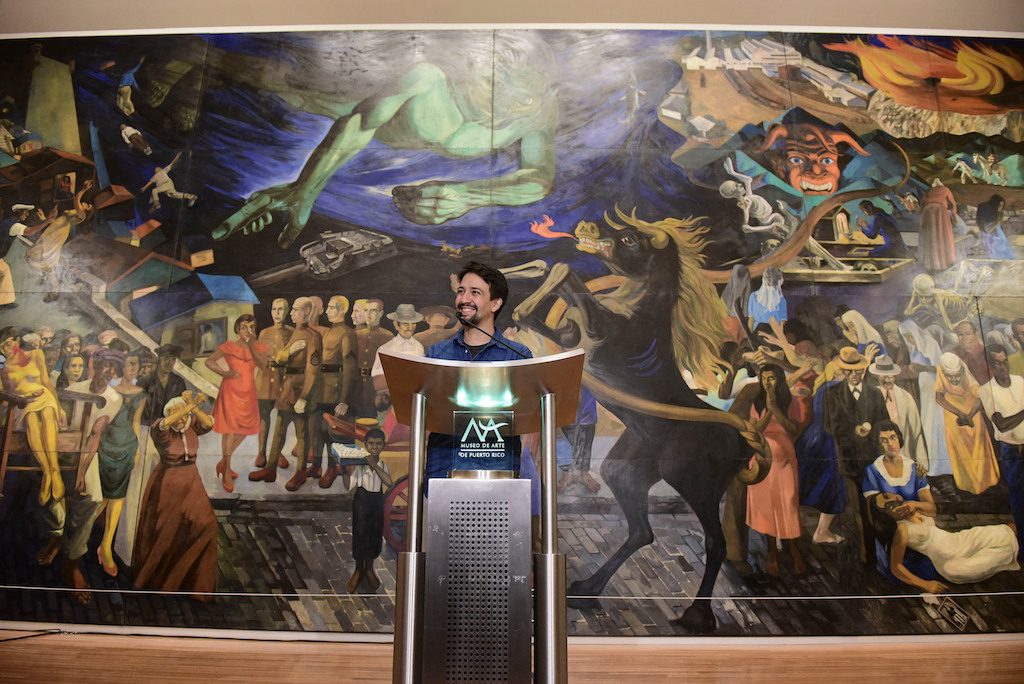
Lin-Manuel Miranda at the Art Museum of Puerto Rico in San Juan, Puerto Rico, in 2018. Photo: Carlos Giusti/AP/Shutterstock, via ARTnews
Lin-Manuel Miranda Teams Up with Google for Major Art Digitization Project in Puerto Rico
The collaboration was formed after Miranda’s recent visit to the Instituto de Cultura Puertorriqueña in San Juan, which currently lacks a permanent space for exhibitions. (ARTnews)
What’s Next for Nonprofit Museums after the Closing of the Marciano Art Foundation?
The museum abruptly closed last week after laying off dozens of employees attempting to unionize, and now faces a charge from the National Labor Relations Board. (Los Angeles Times)
Here’s How to Make Your Teaching More Inclusive
Incorporate these practical steps into your teaching to minimize inequities and help more students succeed. (Chronicle of Higher Ed)
MoMA’s Revisionism Is Piecemeal and Problem-Filled: Feminist Art Historian Maura Reilly on the Museum’s Rehang
“Does Ringgold need to be linked with Picasso to validate her genius?” (ARTnews)
Want articles like these in your inbox? Sign up:
An Interview with Kellie Jones, 2020 CAA Distinguished Scholar
posted by CAA — Oct 28, 2019
We are delighted to welcome Dr. Kellie Jones, professor in Art History and Archaeology and the Institute for Research in African American Studies (IRAAS) at Columbia University, as the Distinguished Scholar for the 108th CAA Annual Conference in Chicago, February 12-15, 2020.
Dr. Jones, whose research interests include African American and African Diaspora artists, Latinx and Latin American Artists, and issues in contemporary art and museum theory, is the recipient of awards from the Hutchins Center for African and African American Research, Harvard University, Creative Capital, and Warhol Foundation, among others. In 2016, she was named a MacArthur Foundation Fellow. In 2018, Dr. Jones was the inaugural recipient of the Excellence in Diversity Award from CAA.
CAA media and content manager Joelle Te Paske spoke with Dr. Jones earlier this fall to learn about what she’s working on and looking forward to in upcoming exhibitions and scholarship. Read the interview below.
This interview has been edited for length and clarity.
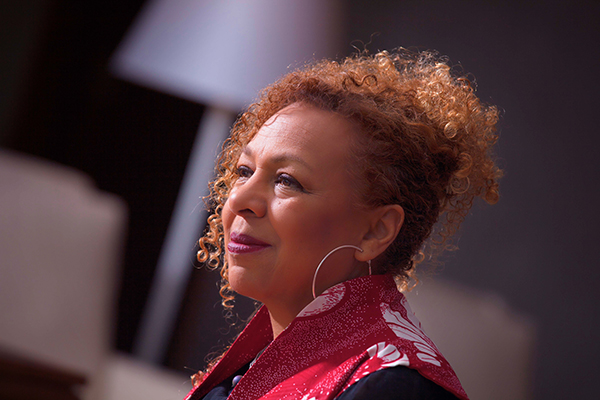
Dr. Kellie Jones. Photo: Rod McGaha
Hi, Professor Jones. Thank you for taking the time for this interview. It’s an honor to speak with you and we’re excited that you’ll be with us in Chicago.
I’m looking forward to it.
Great. So to begin—to locate ourselves in time and place—how are you? How was your summer?
It’s always fun, and it always ends too quickly. I think that’s just normal. [Laughs]
Yes, I guess that’s where we should be at this point [laughs]. Were you working on a particular project this summer?
Yes. I was working on a project for Center for Advanced Study in the Visual Arts (CASVA). Huey Copeland of Northwestern University and Steven Nelson of UCLA are spearheading a Black Modernisms seminar with a group of scholars. I just finished an essay on the Harlem Renaissance that is still to be titled. I haven’t written extensively on that period so I’m really looking forward to hearing back from them. It involves race and gender and I’m very excited about it.
What else is exciting in your work right now?
Candida Alvarez: Here, A Visual Reader (Green Lantern Press 2019), the first major monograph on the Chicago-based painter, is about to hit shops. I’m excited by this project to which I contributed the essay, “When Painting Stepped Out to Lunch.” I have book that I’m finishing on global conceptual art networks that is tentatively titled Art is an Excuse, on how conceptual art allowed for different types of global connections. One great example is Senga Nengudi and her relationship to Japan which is something I’ve written about earlier but I wanted to more forthrightly connect to Japanese conceptualism. So how does Senga Nengudi fit into that dialogue, or what is her dialogue? I’m thinking about conceptual art as a motor for global art connection, different from what people call globalization—more like artist dialogues, not neoliberal globalization.
A macro view.
The book is more about relationships. We always think about artists in their particular nationalist space. What did Japanese conceptualism look like? What did Latin American conceptualism look like? How were they different? But we really don’t talk about the kind of dialogue that people have with each other. That’s really the whole premise of the project.
That’s terrific. I read that for undergrad at Amherst College you made an interdisciplinary major. I was going to ask: Has an interdisciplinary outlook been formative in your career? But I feel you’re already embodying that.
You’re absolutely right. I created an interdisciplinary major at Amherst. Shout out to my alma mater and to liberal arts education.
We love that at CAA, yes.
And we love it because it allows people to see the breadth of the world in some fashion and then choose something or choose a few things. I’m one of the people that thought about Latin American and African American and Latinx artists at least from my college years, and I’ve been going with that for the longest, along with ideas of the African diaspora. You might start out with “Let’s compare”—the comparative structure; the binary is such a signature of art history. But then you realize that it’s so much more than a just a binary—the interdisciplinarity, the multidisciplinarity. That’s always been a part of what I’ve looked at because at that time—and I know I’ve said it on numerous occasions in numerous platforms—art history was really taught one way. Because I had grown up in New York I said, “But wait a minute, they’re leaving out all of these people that are making art that I know!” That I see every week. I mean, how is that possible? So I started there and just kept going.
I also read that you wanted to be a diplomat originally, and that makes sense to me. I think art historians are often part-diplomats, part-detectives, part-scientists. There’s so much that goes into the field.
Absolutely. I wanted to get away from art. I grew up with artists and poets and I said, “Oh my god, these people are broke. I can’t do that.”
Well, that’s realistic—I suppose it’s changed, too.
It’s absolutely changed, but if you’re thinking about late 1970s—wow. People weren’t even thinking about objects too much.
Someone reminded me much later—maybe a couple of years ago—they said, “Well you know, you’ve been doing [diplomacy] with art. You’ve been a cultural ambassador with this work, because you’ve done shows around the world.” Art history became, “Wow, you can do the same things.” You can study languages. You can travel. It did become a way you could do all those things, and then of course as you just mentioned, as a curator you are a diplomatic entity between artists and the institution.
As a liaison, definitely. It’s sensitive.
Right. Even as an academic, if you’re traveling around or if you’re representing a contemporary artist in your writing—how do you balance how the artist sees themselves with what you have to say? There’s always that.
I’m curious what you see as emerging trends in scholarship, especially in art history.
I think students and academics—particularly a new generation—don’t want traditional art history as we have known it. They want a more interdisciplinary, multidisciplinary, global understanding of art in the world. Art history is not just Europe, and it’s not just the United States. And the art of the United States meaning not just New York!
I think the other really exciting arena is, of course, gender. Gender studies. Queer studies in art history. Trans studies. All those things really change how we understand the object, how we understand history, the histories that we look for. There’s a similarity to the discoveries that I made when I was a student in college about how art history at that time did not represent even the histories of African Americans who were in New York, for instance. United States art history is written from a New York-centric perspective. And at that time, you didn’t see too many women in it. You didn’t see too many African Americans or Latinx figures. So now that such subjects are more widely known the next step seems to be to ask,”What is a queer art history?” And some people have been doing this for a while: Jonathan Weinberg, James Smalls, Julia Bryan-Wilson has brought us into the present with some of these ideas, and C. Ondine Chavoya with his Axis Mundo, project. So all these ideas are becoming more visible and I think it’s really exciting.
That’s one of the reasons why I’ve been so keen on my Harlem Renaissance article. It started out in one way, and then it took me in another direction; it takes another look at objects that have been dismissed as not being relevant, and sees them through a different lens. It opens up other paths into these works that have been discarded. Or maybe not discarded, but put to the side. Let’s ask, “What’s going on with gender in these works?” What’s going on with queerness, and how do they signify to a Harlem Renaissance that is quite queer? It’s something people in literature have discovered, certainly in the African American context, and they’ve been talking about that for years. Art history has to catch up.
Yes, you feel a real energy in the field, a real hunger for it. With recent protests around Warren Kanders at the Whitney Museum, what are your views on that momentum? [Editor’s note: Since this conversation took place, Warren Kanders announced his resignation from the Whitney Museum board.]
Well, you know, there have always been protests at US museums as well as those around the world. So whether you are a curator or a director who bares the brunt of the protest, or you are an artist who withdraws, you’re part of history. Scholars down the road are going to say, “These people pulled out. These people wrote a letter. These were the curators. These were the board members.” So for me it’s just part of history, and it has ebbs and flows. There are a lot of things going on in this world that artists are addressing, that artists see. They do respond to the world in one way or another. You may not see it visibly, but it’s there.
I agree. I think putting new ideas in the world the way artists do is cultural change, and like you said—it’s interconnected. You can’t really have one without the other.
Yes. It’s part of a larger history.
When did you first join CAA? Do you have a favorite memory from a conference?
I had joined CAA by 1990, when I served as the co-chair of the programming at the Annual Meeting for the Studio or Artists’ sessions with Robert Storr. I’ve been on plenty of panels since then, but to be honored in this way is humbling and exciting. Even better, all of the respondents I asked to participate on the Distinguished Scholar panel said, “Yes! I’ll be a part of it.” So I’m thrilled about that. I’ve been at Columbia University about 13 years, and I remember when Rosalind Krauss was honored, and I participated in Richard J. Powell’s Distinguished Scholar panel. So to step into those shoes, it seems a bit surreal.
Thinking of Chicago in 2020—do you have a favorite art-related excursion there?
Well, the South Side Community Art Center is legendary. It’s one of the original community art centers from the New Deal era, and it’s still in existence. I would definitely say go to that. That’s my favorite.
I’m marking it down for myself. Are there exhibitions coming up this fall that you recommend?
Senga Nengudi at Lenbachhaus in Munich; Robert Colescott at the Contemporary Art Center in Cincinnati curated by Lowery Sims and Matthew Weseley; Lynette Yiadom-Boakye at Yale Center for British Art curated by Hilton Als; Hank Willis Thomas: All Things Being Equal…, his first major survey at the Portland Art Museum. Curator Meg Onli at ICA Philadelphia has done a trio of shows under the title Colored People Time. The final component Banal Presents will be on view through December 22, 2019.
Shows that are further out that I’m excited about are Prospect 5 in New Orleans (Fall 2020), curated by Naima Keith and Diana Nawi. The citywide triennial in New Orleans is just a great experience. Everyone should check it out. Thomas Lax’s exhibition on Just Above Midtown gallery, that generative space of 1970s and 1980s, and its founder Linda Goode Bryant, will be wonderful to see at MoMA in 2022.
There are so many great young curators out here. Rujeko Hockley, Erin Christovale, numerous others. Tiona Nekkia McClodden is an artist who’s been doing some great archival curatorial work. She had a show that was in response to the anniversary of Mapplethorpe’s The Perfect Moment that just closed. There are just so many great people out here doing some wonderful things, and a lot of wonderful younger artists. I’m excited by it. We started out by talking about multidisciplinarity, interdisciplinarity—young curators are invested in that idea as much as scholars.
Oh and one thing that I’m really looking forward to down the line is, of course, the reopening of the Studio Museum in Harlem. I cannot wait for that!
Yes! It’s a ways off but that’s an exciting one. Well, thank you Dr. Jones. I appreciate you taking the time, and it’s been a pleasure to speak with you.
Thanks for your questions, and again it’s really an honor to be a part of this whole thing. I still kind of can’t believe it. I guess I will in February when I step off that plane!
The Distinguished Scholar Session honoring Kellie Jones will take place Thursday, February 13, 2020, from 4-5:30 PM at the Hilton Chicago, Grand Ballroom.
Biography of Dr. Kellie Jones
Dr. Kellie Jones is a Professor in Art History and Archaeology and African American and African Diaspora Studies at Columbia University. Her research interests include African American and African Diaspora artists, Latinx and Latin American Artists, and issues in contemporary art and museum theory.
Dr. Jones, a member of the American Academy of Arts and Sciences, has also received awards for her work from the Hutchins Center for African and African American Research, Harvard University and Creative Capital | Warhol Foundation. In 2016 she was named a MacArthur Foundation Fellow.
Dr. Jones’s writings have appeared in a multitude of exhibition catalogues and journals. She is the author of two books published by Duke University Press, EyeMinded: Living and Writing Contemporary Art (2011), and South of Pico: African American Artists in Los Angeles in the 1960s and 1970s (2017), which received the Walter & Lillian Lowenfels Criticism Award from the American Book Award in 2018 and was named a Best Art Book of 2017 in The New York Times and a Best Book of 2017 in Artforum.
Dr. Jones has also worked as a curator for over three decades and has numerous major national and international exhibitions to her credit. Her exhibition “Now Dig This! Art and Black Los Angeles, 1960-1980,” at the Hammer Museum, Los Angeles, was named one of the best exhibitions of 2011 and 2012 by Artforum, and best thematic show nationally by the International Association of Art Critics (AICA). She was co-curator of “Witness: Art and Civil Rights in the 1960s” (Brooklyn Museum), named one the best exhibitions of 2014 by Artforum.
News from the Art and Academic Worlds
posted by CAA — Oct 09, 2019
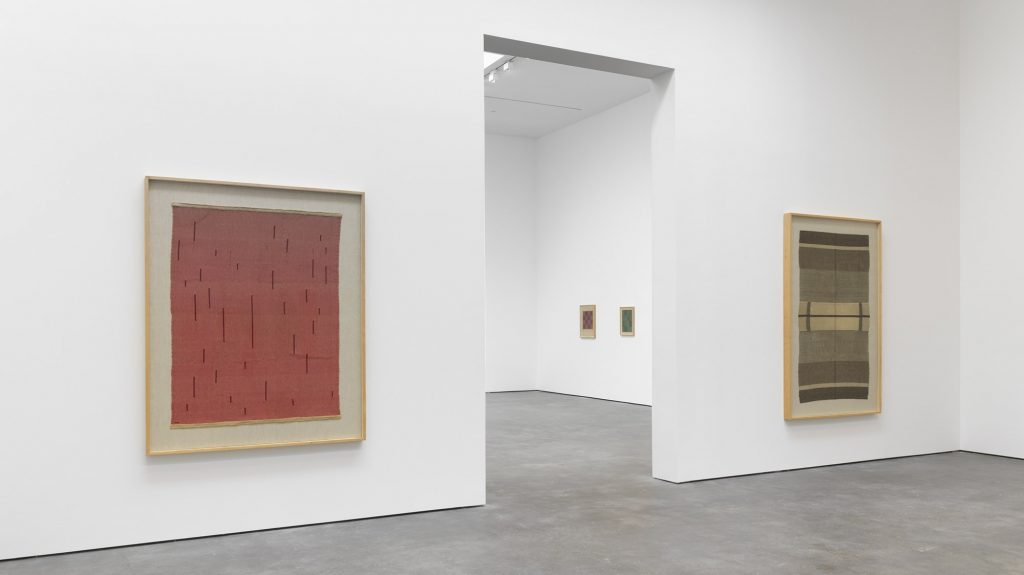
Anni Albers’s work is the subject of a new exhibition at David Zwirner in New York. Image: David Zwirner, via Vanity Fair
Listening to Threads With Anni Albers
“Circumstances held me to threads and they won me over,” Anni Albers said on a 1982 College Art Association panel. “I learned to listen to them and to speak their language. I learned the process of handling them.” (Vanity Fair)
Art Classes Instead of Court Dates? In Low-Level Cases, Brooklyn DA Says Yes
People arrested on low-level misdemeanors in Brooklyn will now have the option to complete a one-day arts course at the Brooklyn Museum. (Brooklyn Eagle)
New Scrutiny of Museum Boards Takes Aim at World of Wealth and Status
For board members not invited because of artistic or academic accomplishments, the price of entry remains steep. (New York Times)
What the Hell Was Modernism?
“Much of modernism and its concerns now feel long ago, forged in a time of rapid industrial change when white European males assumed they ruled the world. The demands of our times call for something else.” Jerry Saltz considers the new MoMA. (New York Magazine)
Want articles like these in your inbox? Sign up:
News from the Art and Academic Worlds
posted by CAA — Sep 25, 2019

Installation view of Women Take the Floor at the MFA Boston, an effort to dedicate more space to women’s artworks. Only 4 percent of the art acquired by the museum between 2008 to 2018 was by women—3,788 of 90,215 works. Image: Museum of Fine Arts, Boston, via New York Times
Female Artists Made Little Progress in Museums Since 2008, Survey Finds
New data shows that in the last ten years, only 11% of all work acquired by top US museums was by women. (New York Times)
The Getty Trust Will Spend $100 Million to Protect Archaeological Sites Around the World From Climate Change and Sectarian Violence
The organization’s ambitious new initiative includes conservation efforts, scholarship programs, publications, and exhibitions. (artnet News)
‘It’s About Time!’ Betye Saar’s Long Climb to the Summit
The artist’s solo exhibition at MoMA will debut with the reopening of the newly expanded museum on October 21. (New York Times)
How Much Does an Adjunct Actually Make?
“What if everyone just told their students how much they got paid?” According to a 2015 study, one in five part-time faculty members live below the federal poverty line. (Hyperallergic)
Want articles like these in your inbox? Sign up:



